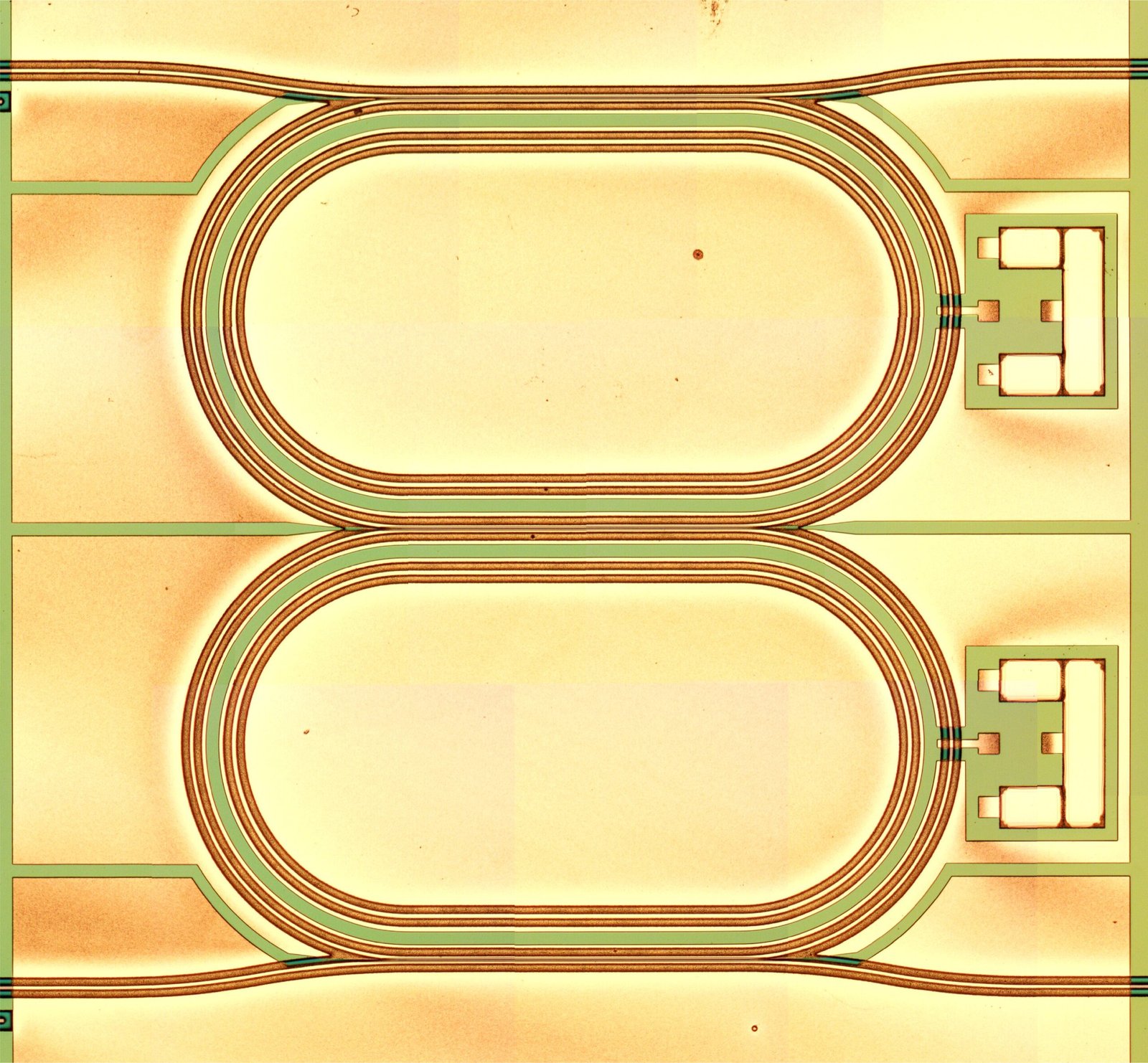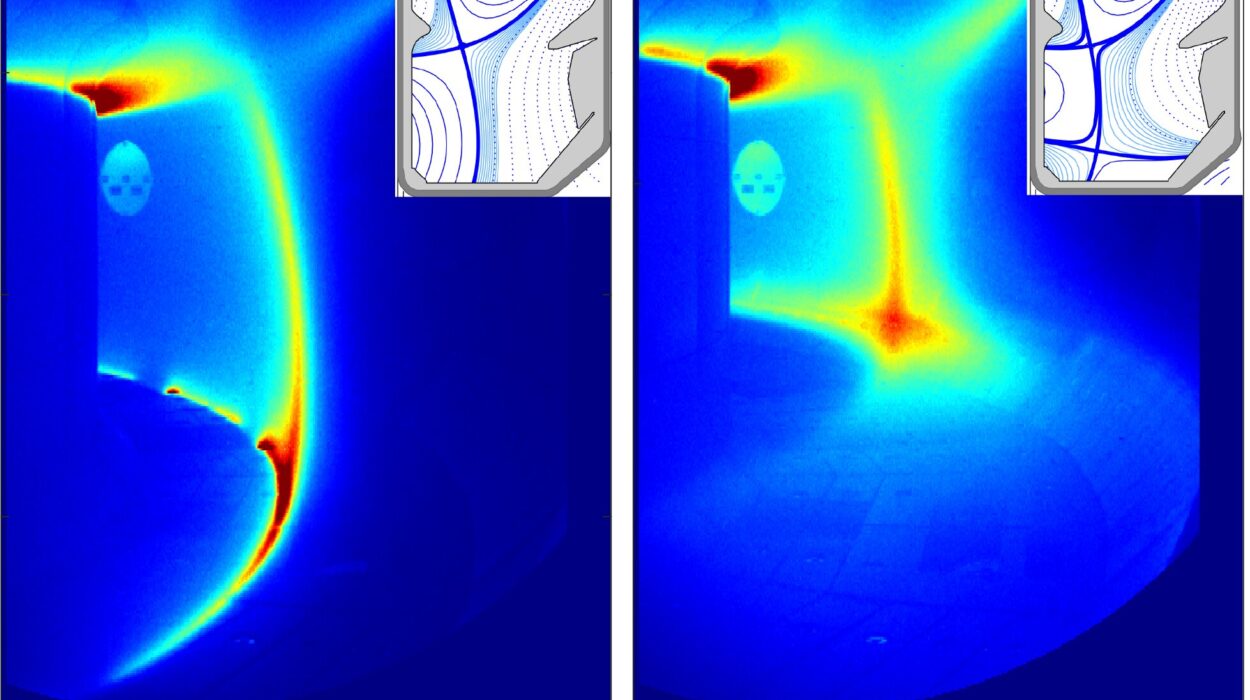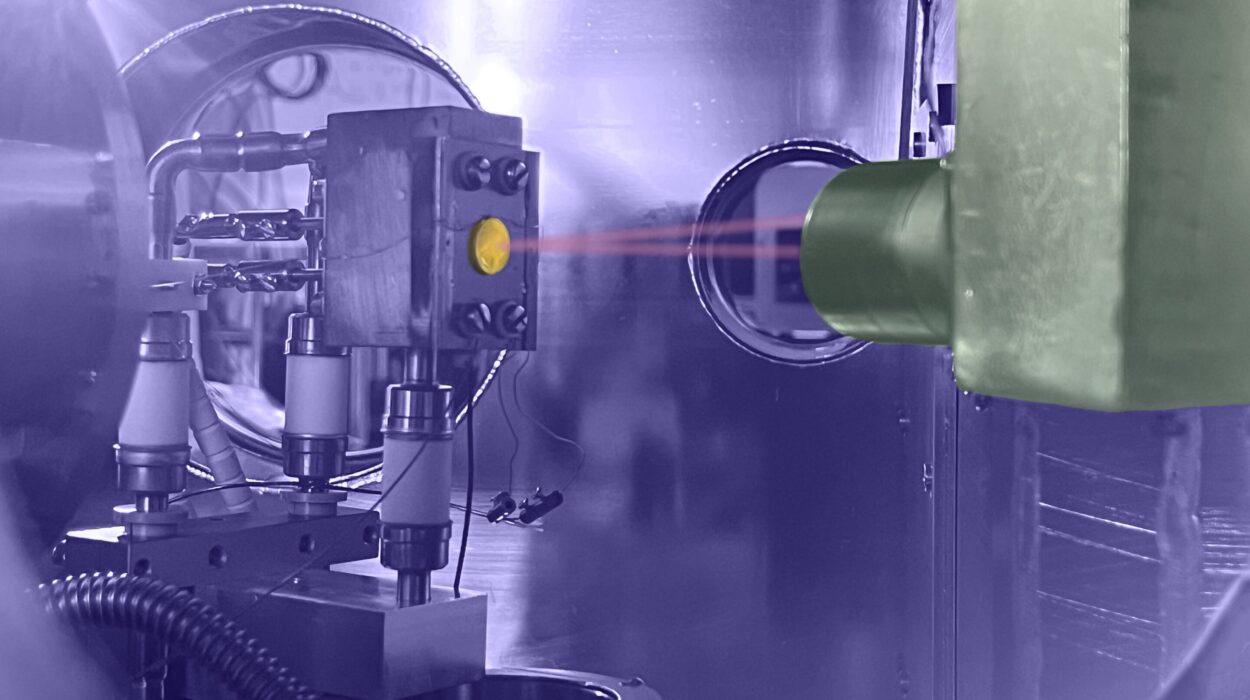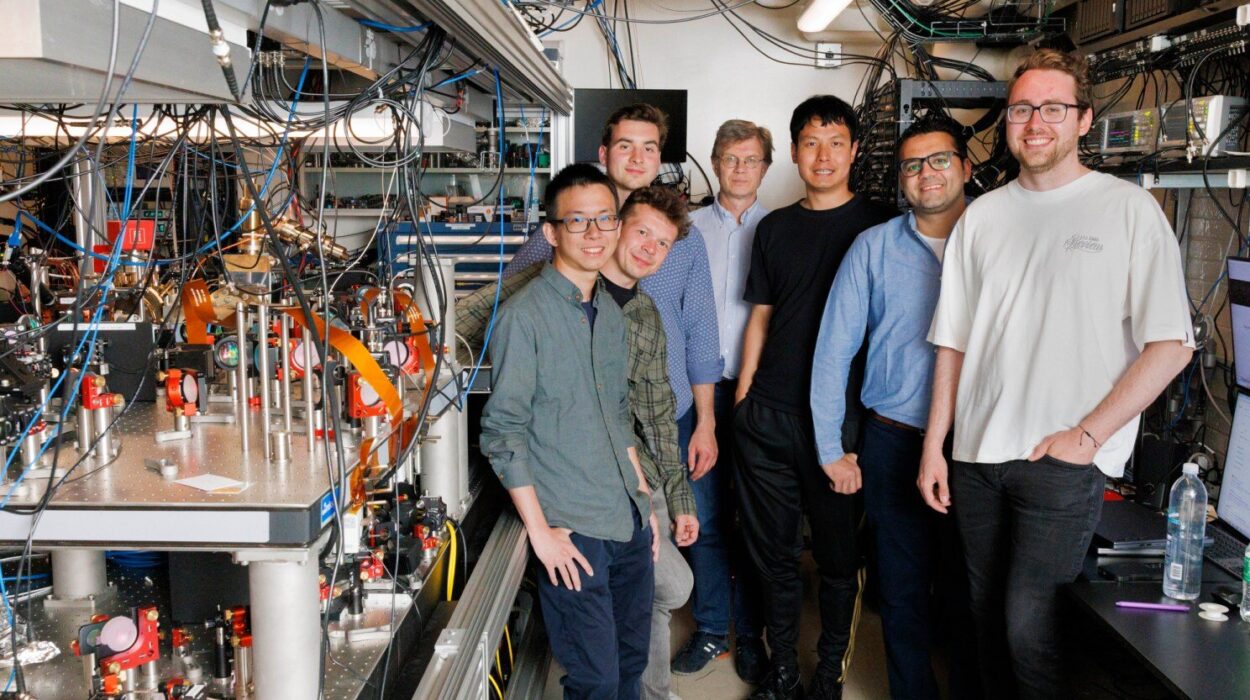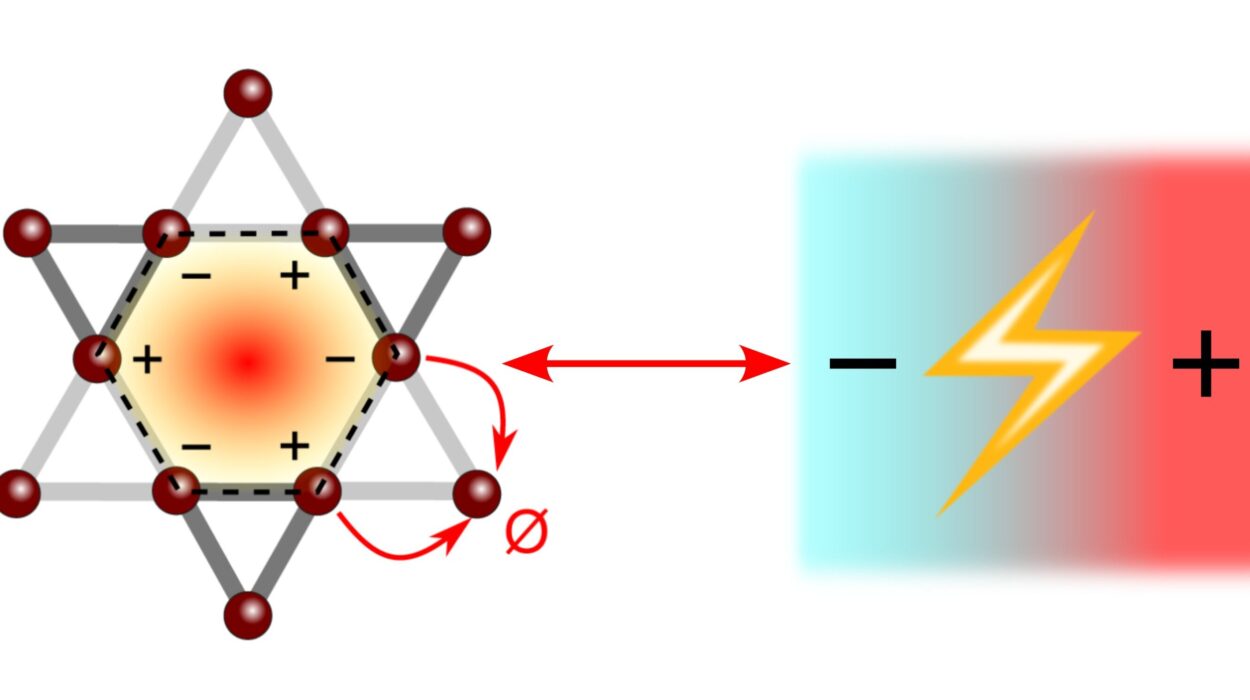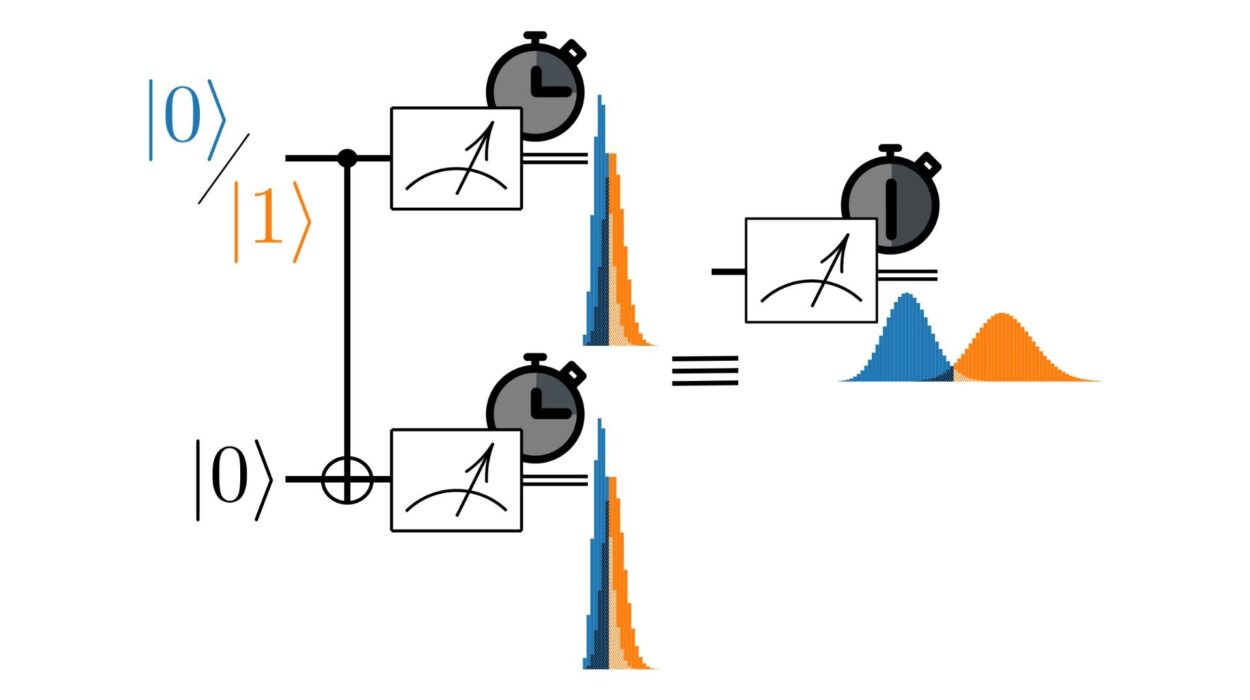The physical interaction between two or more systems, referred to as coupling, can give rise to a variety of phenomena, often leading to unique and unexpected effects. In the field of optics, this coupling is particularly intriguing when it involves light sources such as lasers. When light-emitting systems are coupled, they can influence each other in ways that produce complex patterns of light—patterns that cannot be replicated by any single system on its own. A recent study conducted by researchers at Harvard University, Politecnico di Torino, and TU Wien has provided fresh insight into this concept by showing how coupled semiconductor-based ring lasers can generate novel optical patterns with remarkable properties.
Published in Physical Review Letters, the study explores how a system of coupled racetrack quantum cascade lasers (QCLs) can produce optical effects that were previously thought to be unattainable for single lasers. This work could pave the way for new advances in spectroscopy techniques and on-chip laser systems, particularly in the development of more efficient and compact photonic devices.
Coupling in Semiconductor Lasers
The research builds on the team’s previous experiments involving single racetrack QCLs, which had already revealed fascinating phenomena, including the spontaneous emission of what are known as Nozaki-Bekki solitons—a type of “dark” pulse of light. These pulses, characterized by their distinct nature, arise from the complex dynamics of the laser’s emissions. This prior work sparked the idea to explore what might happen when multiple lasers are coupled together, taking advantage of the nonlinear dynamics inherent to QCLs and the multi-resonator nature of coupled systems.
The researchers, led by Theodore P. Letsou, employed a system of coupled semiconductor ring lasers. These lasers, in the shape of miniature racetrack resonators, are optically coupled at their straight sections, allowing light to circulate in either a clockwise or counterclockwise direction within each ring. Light is exchanged between the coupled lasers, which are sensitive to each other’s behavior. This interaction creates a unique form of coupling that produces complex optical effects not achievable in isolated lasers.
“We wanted to explore what would happen if we strongly coupled multiple racetrack lasers, effectively combining the fast nonlinear dynamics of QCLs with multi-resonator systems,” said Letsou, the first author of the paper. “By investigating these coupled systems, we were able to uncover new states of light that had never been observed before in free-running lasers.”
Hybridization of Laser Modes
A key phenomenon observed in this experiment was the hybridization of the resonant frequencies of the coupled lasers. When two oscillators, regardless of their structure, are strongly coupled, their individual frequencies begin to split and move further apart as the coupling strength increases. This splitting of frequencies, known as mode hybridization, was evident in the researchers’ setup, where light was injected into one of the racetrack lasers through a bus waveguide and the output was measured from the second laser.
Under typical circumstances, coupled oscillators influence each other in predictable ways. However, in this case, the researchers used a novel method that allowed both lasers to be biased above their operational threshold simultaneously. This arrangement caused the frequencies of the lasers to “lock” together, forming two distinct frequency combs—one for each set of hybridized modes.
These combs, when locked to the same repetition rate, exhibited a surprising and novel behavior. Despite being coupled, the two frequency combs repelled each other due to the strong coupling between the two lasers. Even more remarkable was the discovery that one set of frequencies corresponded to bright pulses of light, while the other corresponded to dark pulses—an effect never before seen in a free-running semiconductor laser.
Observing Dark and Bright Pulses
One of the most striking outcomes of the experiment was the generation of both ultra-short bright pulses and dark pulses of light. By carefully adjusting the biasing conditions of the lasers, the researchers could control the emission of these pulses. This ability to produce both types of pulses using coupled semiconductor lasers is significant because it opens up new possibilities for nonlinear optical experiments.
“These dark pulses are a novel phenomenon in their own right, and their discovery is an important step in advancing our understanding of nonlinear optics,” said Letsou. “In addition to the bright pulses, which are useful in a wide range of applications, the dark pulses offer a unique tool for studying the behavior of light in coupled systems.”
These findings could have profound implications for the development of future optical technologies. For example, the dual-pulse phenomenon could potentially be harnessed in applications such as dual-comb spectroscopy, a technique that combines two frequency combs to probe material properties with exceptional precision.
Potential Applications in Spectroscopy
The potential for these coupled lasers to influence spectroscopy techniques is immense. In dual-comb spectroscopy, two separate frequency combs can be used to probe gas absorption lines—specific frequencies where gases absorb light. By combining the output of the two coupled lasers onto a detector, the absorption of light is converted into an electrical signal, allowing for highly precise measurements of material properties.
“Both frequency combs emitted from the coupled lasers can probe gas absorption lines, and by mixing the resulting signals onto a detector, the optical absorption is effectively converted into an electrical signal,” said Letsou. “This could lead to more efficient and compact spectroscopic systems with far-reaching applications in chemical sensing, environmental monitoring, and medical diagnostics.”
In essence, the ability to generate such diverse and complex light patterns from a single system of coupled lasers offers a powerful new tool for researchers and engineers working in fields like photonics, quantum optics, and optical communications.
The Future of Coupled Laser Systems
The team’s work is just the beginning. Letsou and his colleagues are already looking forward to future investigations that could involve more lasers and even more complex coupled systems. Their next goal is to explore what happens when multiple racetrack lasers—three, four, or more—are coupled together. This would extend the concept of coupled systems to larger networks of resonators, opening up exciting new research possibilities.
“One direction we are exploring is what happens if we couple more than two racetracks together, or even create a matrix of rings,” said Letsou. “We hope this work will lay the groundwork for further investigations into the creation of coherent states of light in multi-resonator systems, which could have a wide range of applications.”
By extending their work to systems with more coupled lasers, the researchers aim to explore the full potential of these complex systems in producing new states of light, as well as discovering entirely new phenomena that could enhance the functionality of future optical technologies.
Conclusion
The research conducted by Letsou and his colleagues at Harvard, Politecnico di Torino, and TU Wien represents a major breakthrough in the field of optical coupling. By demonstrating that coupled semiconductor ring lasers can generate unique optical patterns, including both dark and bright pulses of light, they have opened up new avenues for nonlinear optics, spectroscopy, and on-chip photonic systems.
The implications of their work are vast. The ability to produce complex light patterns by coupling multiple lasers has the potential to advance quantum optics, communication technologies, and optical sensing. As the researchers continue to explore multi-resonator systems, their work could lead to the development of even more advanced technologies, revolutionizing a wide range of fields that depend on precise control of light.
In the years ahead, these coupled laser systems could form the basis for next-generation photonic devices, offering unprecedented levels of control and flexibility in the manipulation of light. Whether through advancing dual-comb spectroscopy or developing new on-chip laser systems, the work of Letsou and his team is set to influence the trajectory of optical research for many years to come.
Reference: Theodore P. Letsou et al, Hybridized Soliton Lasing in Coupled Semiconductor Lasers, Physical Review Letters (2025). DOI: 10.1103/PhysRevLett.134.023802.
